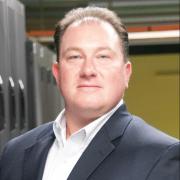Choosing a Data Center Location
When choosing to build a new data center, there are a multitude of factors that should be considered in the decision-making process. Establishing a fully redundant and secure data center requires a significant capital investment as well as a commitment to ongoing operational expenses for support, and maintenance. However, a key step in the process is determining the best and most suitable location for the facility. As one can imagine, months of analysis, evaluation, engineering and planning takes place as part of this step. Some of the main factors that need to be taken into consideration are weather patterns, proximity to workforce talent, access to power and connectivity, and real estate considerations among others.
Weather and Natural Disasters
According to the National Centers for Environmental Information, “in 2014, there were eight weather and climate disaster events with losses exceeding $1 billion each across the United States.” Financially speaking, this is why weather can play a huge role in the decision of where to build a data center. Weather patterns by region should be analyzed as well as average rainfall amounts, average high/low temperatures, average wind speed/gusts, flooding tendencies and seismic activities.
Proximity to Customers and Skilled Workforce
Building near your customer base is optimal, if that option is possible. Many applications are built requiring fast response times and minimal latency. In addition, there are companies that find comfort and security in the ability to physically see, touch and access their IT environment. Data centers require technically adept staff. Building in an area that has a resource pool of technical knowledge and skill set is a distinct advantage for the colocation provider. Also look for universities and colleges in the area that have strong technical programs. This can be an overlooked factor when determining where to build.
Power and Network Accessibility
This is the backbone of the data center. Without accessibility to commercial power and redundancy or full access to reliable connectivity, a data center is useless. While a geographic area may have access to a reliable power grid, take into consideration the location of the main generation power station(s), substations and feeds to where your data center will be built. If multiple commercial power feeds are available, this will be an inherent benefit to easily ensuring redundancy at your facility. It would also be beneficial to research outages suffered by the local power companies and what their average response time was. For the most reliable connectivity and continuous uptime, access to numerous tier one network providers is essential.
Real Estate/Location Considerations
Do you want to build from scratch or find a suitable building that needs modified or rebuilt? Is there room for expansion in the area in which you are looking? Is the area accessible by multiple roadways or near an airport? Does the local or state government offer any tax incentives for choosing their city or are there tax breaks that your customers could utilize? These are all questions to ask when choosing your data center site location.
While all of these things must be vetted before choosing to build, each colocation provider will prioritize their requirements differently. At Expedient, 75 percent of our customers are located within a two-hour drive to their data center. Being local provides us advantages as previously stated and it’s a critical element that we consider when building new data centers. Expedient also ensures geographic diversity in disparate locations, each at a low risk of natural disaster. Furthermore all of our data centers are interconnected with a multi-gigabit fiber ring and they have multiple fuel, network and power suppliers to ensure redundancy, uptime and availability.
